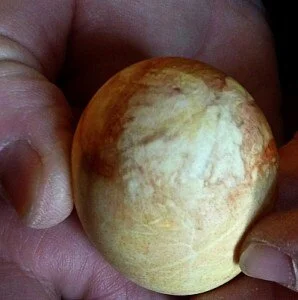Easter Eggs Dyed with Herbs, Onions and Edible Flowers
Materials:
White eggs
Small scraps of white silk, about 5″ square
Twine
Gather natural coloring materials (various herbs) and wash in cold water, then snip off leaves into small piles. Reserve edible flowers for later. Be sure to collect plants and flowers that have not been sprayed with pesticides, and if there are insects on them, remove all traces of insects.
Some materials that work include:
Red onion skins
Yellow onion skins
Cilantro leaves
Fennel leaves
Rosemary Sprigs
Any other edible plant with small leaf parts
Moisten the onion skins. Lay out a silk scrap, and place on larger onion skin on the silk, then an egg on top of that. Put in one or more herb leaves positioned beneath the onion skin. Most herbs will not color the eggs, but will leave a resist imprint of their shape. The part of the egg covered by the onion skin will pick up rust or brown colors. Add other small bits of onion skin to the packet, then gently pull the silk up around the egg and herbs, and bind as tightly as you can without breaking the egg. Tie with twine. Set aside and tie up another egg until you have a bunch for boiling.
Place al the egg bundles in a pan of cold water with 1 tablespoon of vinegar. Then heat the water to boiling and simmer 10 minutes. Remove the pan from the heat and allow to cool naturally until you can put your hand in. Remove the egg bundles and unwrap them.
To add other flower colors, use and additional cold wrap. Flowers are more delicate than leaves, especially the purple or red ones, so this method is to pull color out of the edible flowers and onto your eggs. After boiling, but while the eggs are still very warm, remove all the herb material from the silk and add small edible flowers –herb flowers, rose petals, nasturtium flowers, pansies, lavender, and more.
Place 1 or 2 flowers on the white parts of the dyed egg and wrap it up again in the damp silk. Place in the refridgerator for a few days. Then unwrap and celebrate Easter! The silk wrappings can be used in other projects.
NOTE: Most plant dyes are more successful on protein materials than cellulose ones, hence good color on both eggs and silk. Cotton doesn’t work as well.

